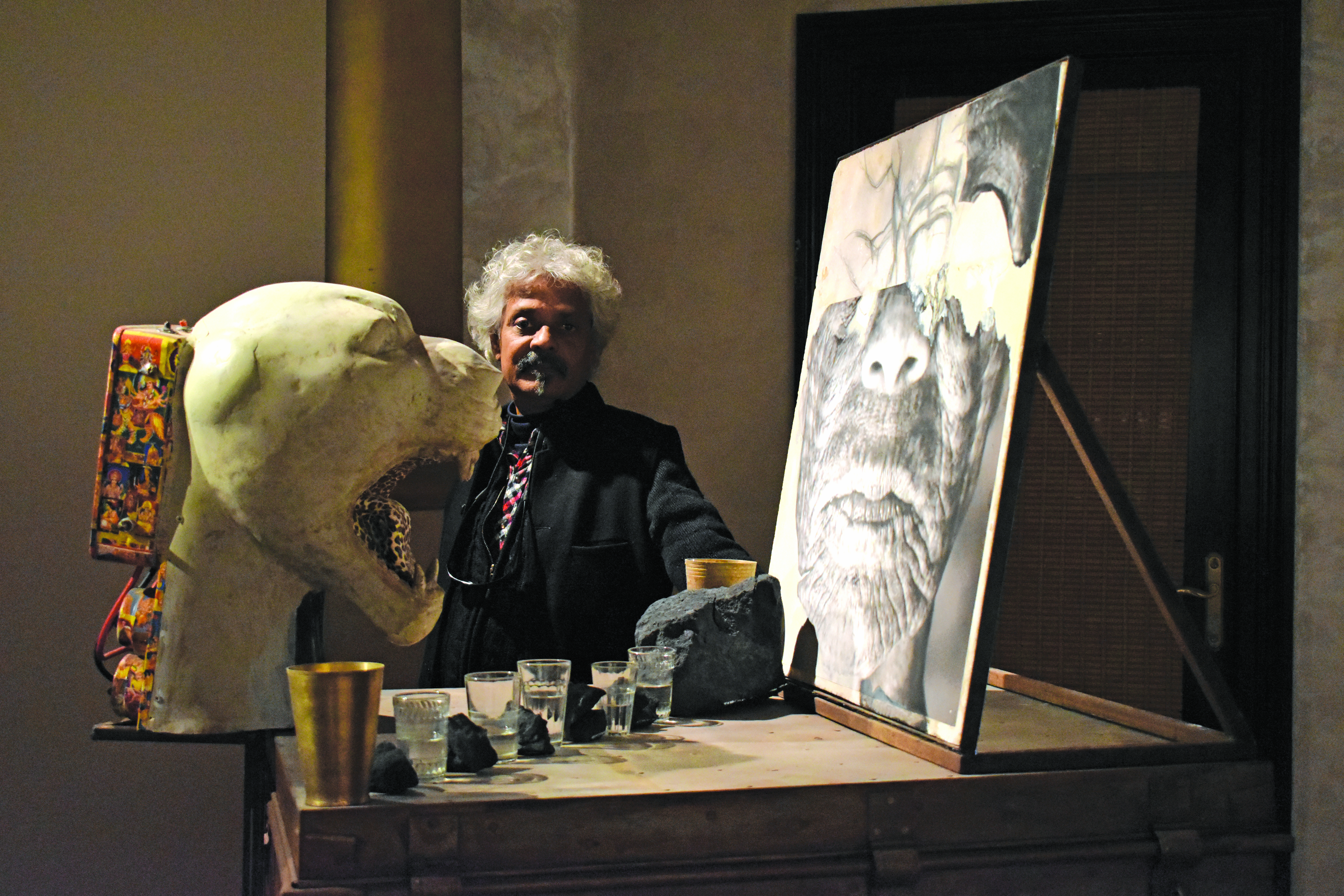The Praxis of Probir
The crossroads where art and politics meet is almost always difficult to negotiate. At practice, by nature solitary and verging on the solipsistic, can seem antithetical to a genuine concern for the body politic or an engaged social responsibility. While the politics of aesthetics can be a subject for valuable inquiry, the aestheticization of politics can offen heve disastrous results.
Trained in both India and Paris, for many years Probir Gupta practiced a rectified form of abstract painting, rigorous yet distant form his interests in Marxist thinking and subaltern discourse. In he mid-to-late 1990s, while in his late 30s, Probir instinctively began to forge a route from which he could address the subjects of human rights, civics, class and communal tensions, or labor relations through forms, materials and images. The artist was led to discover the beauty and power to be found in industrial debris, the metaphors for human suffering reflected in the scarred waste of military equipment. At the same time , the production of art took a back seat to community service as Probir became engaged with collaborative and educational forums, working with both children and craftspeople to examine social inequities, historical struggles and the politics of representations.
Today, Probir has fused these multiple influences into an art of expanded scope, vision and scale. His paintings are some of the most ambitious, in both size and subject, in contemporary India while his sculptures are increasingly experimental and challenging , to both the viewer and himself. In all his recent works. Probir seeks to address serious issues of an urgent relevancy to India and the world while orchestrating a continuum of mediums that weaves together painting, sculpture, video, photography and installation. His works document the labors of an inquiring mind, the physical manifestations of one artist’s attempt to “agitate the surface” of both a complacent social sphere and a conservative art milieu.
Peter Nagy





















